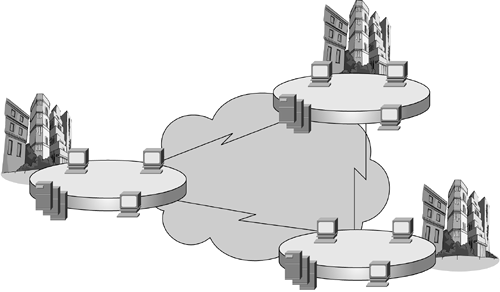Comparing LANs to WANs
Before exploring WANs, let's summarize the characteristics of LANS. As previously stated, a LAN is just what the name implies?a network that is confined to a local geographic area, such as a single office building, a small office in a commercial building, or even a network in your own home. As shown in Figure 3-2, LANs enable you to share resources, such as Internet access or laser printing, with other users on the same network.
Figure 3-2. Local-Area Network (LAN)

In contrast, WANs cover a much broader geographic range than LANs, as shown in Figure 3-3. WANs are often used to connect LANs across a public network, such as the Public Switched Telephone Network (PSTN). LANs can also be connected through leased lines or satellites to create a WAN.
Figure 3-3. Wide-Area Network (WAN)

note
Not all WANs require a public network. A WAN can use privately owned connections, such as "dark fiber," to create a wholly owned and dedicated network. |
As the name implies, WANs are networks that cover a broad geographic area, such as multiple cities, states, or even countries. The largest WAN in existence is the Internet; it spans the globe.






